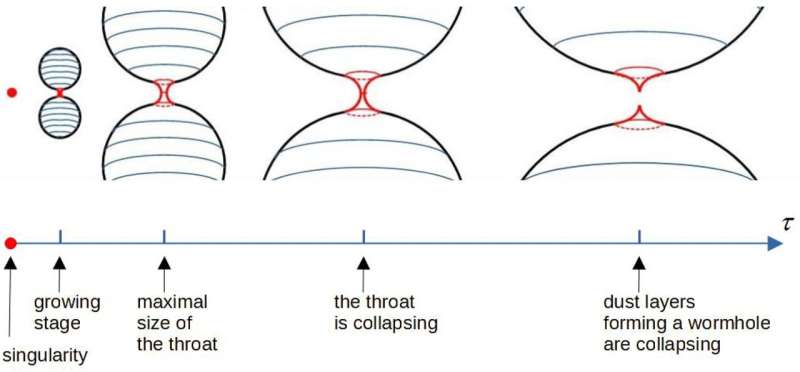Astrophysicists offer theoretical proof of traversable wormholes in the expanding universe
JANUARY 22, 2024
by RUDN University

An evolving wormhole connecting two Friedmann universes. Credit: Universe (2023). DOI: 10.3390/universe9110465
The expansion of the universe at some stage of evolution is well described by the Friedmann model. It was derived from general relativity a hundred years ago, but it is still considered one of the most important and relevant cosmological models.
"A wormhole is a type of highly curved geometry. It resembles a tunnel either between distant regions of the same universe or between different universes. Such structures were first discussed in the framework of solutions to the gravitational field equations a hundred years ago. But the wormholes considered then turned out to be non-traversable even for photons—they could not move from one 'end of the tunnel' to the other, not to mention going back," said Kirill Bronnikov, doctor of physical and mathematical sciences, professor of RUDN University.
"Others are now being considered—traversable wormholes in various theories of gravity and the presence of various types of matter. We investigated possible traversable wormholes in the general theory of relativity, which are supported by dustlike matter," Bronnikov added.
The astrophysicists investigated a generalized form of the famous Lemaître–Tolman–Bondi solution, which describes the evolution of spherically symmetric distributions of electrically neutral dust in general relativity. The researchers generalized it to the case of when there is an external source of an electric or magnetic field and a non-zero cosmological constant. They aimed to find mathematical conditions under which traversable wormholes could exist in such a setting, and then give a cosmological explanation for this.
More:
https://phys.org/news/2024-01-astrophysicists-theoretical-proof-traversable-wormholes.html
